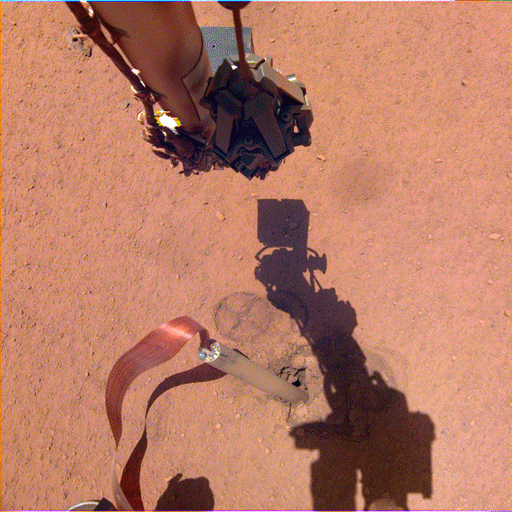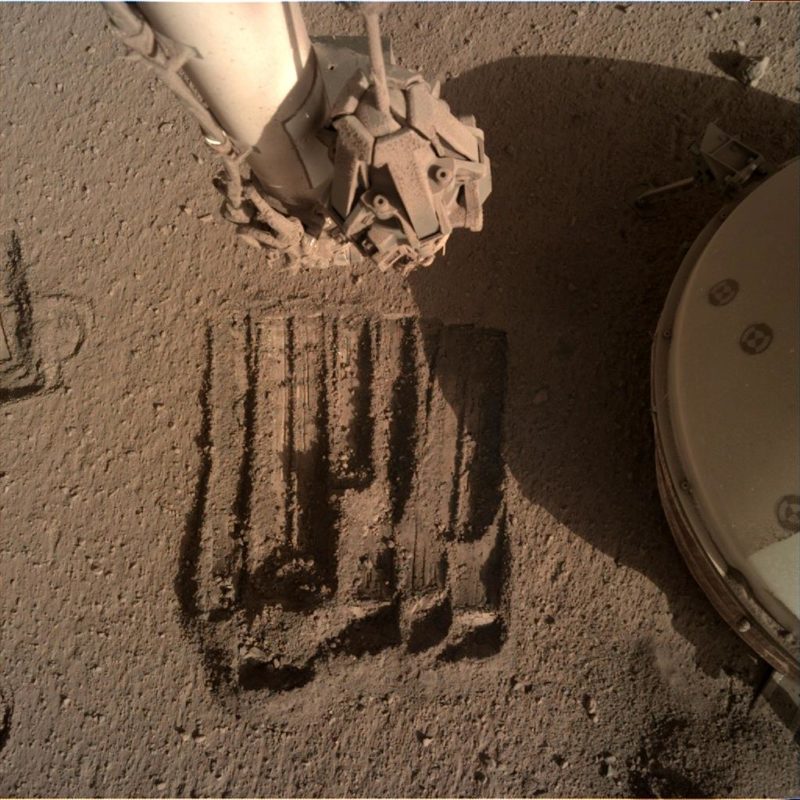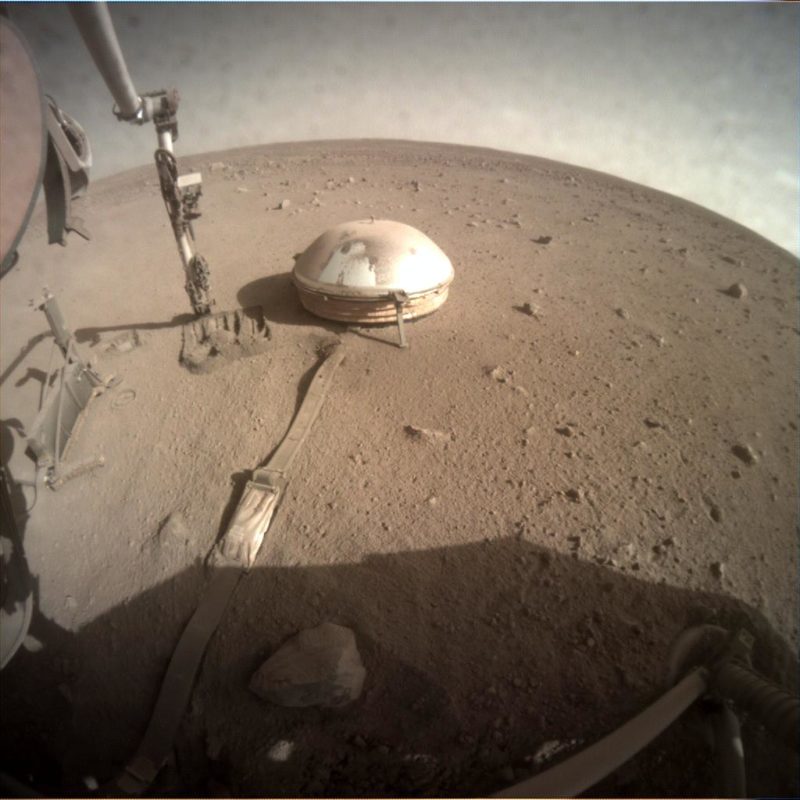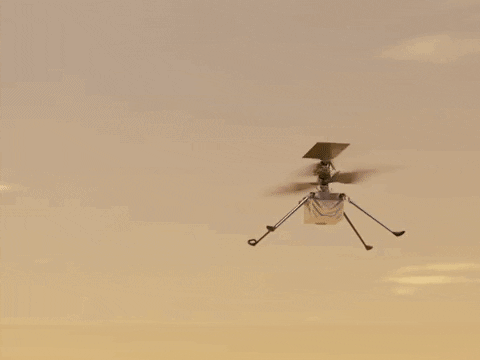The rover is equipped with some 23 cameras. Some help it navigate the Martian terrain by spotting potential hazards like large rocks or trenches.
Others allow human operators on Earth to check that the rover’s parts are in good shape.

Studying Mars to Understand Planet Formation
Mars is in the “sweet spot”—big enough to have undergone most of the early processes that fundamentally shaped the terrestrial bodies (Mercury, Venus, Earth, Earth’s Moon, and Mars), but small enough to have retained the signature of those processes for over four billion years (unlike Earth).
That signature
is revealed in the basic structural building blocks of the planet: crust thickness and global layering, core size and density, and mantle density and stratification. The rate at which heat is escaping from the interior provides an additional valuable constraint.
InSight will address a fundamental issue of solar system science, not just specific questions about a single planet. By
studying Mars, InSight would illuminate the earliest evolution of rocky planets, including Earth.

NASA’s Interior exploration using Seismic Investigations, Geodesy, and Heat Transport (InSight)
spacecraft is scheduled to land on Mars on November 26, 2018. Friction with the atmosphere will raise
the temperature of the heat shield to 2,700 degrees Fahrenheit (about 1,500 degrees Celsius) as it helps to slow the spacecraft’s entry; a parachute and retro-rocket thrusters will slow it down the rest of the way. By 11:54 a.m. PST (2:54 p.m. EST), engineers at NASA’s Jet Propulsion Laboratory, in Pasadena, California, will be looking for signals indicating that
Making oxygen on Mars
NASA’s Perseverance rover just turned CO2 into oxygen. The technology could help astronauts breathe on Mars.
NASA sent the Perseverance rover to Mars with some bonus technology: a device that can turn carbon dioxide into oxygen, much as trees do on Earth.
The device, called the Mars Oxygen In-Situ Resource Utilization Experiment, or MOXIE, pulled carbon dioxide from the Martian atmosphere to produce its first oxygen on Tuesday. It’s a small amount — 5.4 grams, enough to keep an astronaut healthy for 10 minutes — but it’s proof the technology works on the red planet.

That’s good news for the prospect of sending human explorers to Mars. Oxygen takes up a lot of room on a spacecraft, and it’s unlikely that astronauts will be able to bring enough with them to Mars. So they’ll need to produce their own oxygen from the Martian atmosphere, both for breathing and for fueling rockets to return to Earth.
“This is a critical first step at converting carbon dioxide to oxygen on Mars,” Jim Reuter, the associate administrator for NASA’s Space Technology Mission Directorate, said in a press release. Read more from NASA





